Ideal Medical Savings Accounts For Everyone: Encourage Patient Responsibility!
Stanley Feld M.D.,FACP,MACE
The third spoke in the future states wheel is Patient Responsibilty for their health and Healthcare dollars.
The Ideal Medical Saving Account would decrease the cost of the Healthcare System because it would dis-intermediate the Healthcare System’s complex and convoluted business model.
The Ideal Medical Savings Account should be an option for all consumers who have all types of insurance coverage. The Ideal Medical Savings Accounts would create competition for patients among physicians. It would create competition among healthcare insurers.
Medicare, Medicaid, corporate self-insurance plans, association healthcare plans, individual healthcare plans and ordinary healthcare insurance plans provided by employers could all offer the Ideal Medical Savings Account.
If MSAs were structured as my Ideal Medical Savings Account is structured the result would be a decrease in the cost of healthcare, a decrease in premium costs and an increase in healthcare quality.
The Ideal MSA must be paid for by pretax dollars as all other healthcare plans are.
If the government, individual or employer puts the first $6,000 of insurance in individual trusts for the consumer the entire healthcare and medical care supply chain would be disrupted by consumers.
An immediate argument is Medicaid patients are not smart enough to determine their own healthcare needs if they were responsible for the first $6000 of healthcare insurance coverage.
This is rubbish. It is condescending to patients on Medicaid. If the government is so worried they should provide education to help these Medicaid consumers make wise healthcare choices using available social media.
The entire goal of the Ideal Medical Savings Account is to provide incentives for consumers to become responsible for their health and healthcare needs rather than be entitled to medical care.
The mechanism for this reversal from a dysfunctional system’s business model to a functional system’s business model is patients’ owning their healthcare dollars and having financial as well as medical incentive to be responsible for their health, maintaining their health, and choosing the most efficient and effective medical care.
Consumers would become Prosumers (Productive consumers) of health care rather than passive consumers of healthcare.
This mechanism has worked in many industries using the Internet as a facilitator.
The Internet can become an extension of the physicians care.
At present there are many web sites offering advice to patients. The defect is they are not an extension of the physician’s care of the patient.
Physicians would be motivated through competition for the patients’ owned healthcare dollars to choose the sites for his patients that would be an extension of their care.
Physicians associations could create web sites for their members. Social networking between physicians and their patients could direct their patients to that site. This would be the meaning of an extension of the physician’s care.
Patient responsibility is the third spoke in my formulation of the future state business model of a functional healthcare system.
It must be remembered that the present state’s business model is dysfunctional. It must be repaired.
The future state must not be encumbered by any of the baggage of the dysfunctional present state business model.
If the future state model is made clear to patients, potential future patients and recovered patients (consumers) they will demand for this future state model.
Using social media consumers can drive the healthcare system to the future state business model.
It turns out everyone is better off and the system is more efficient and costs less for consumers.
The consumers would own the first $6,000. They would be responsible for the management of there healthcare dollars. They would also be responsible for choosing their physician.
I have found that when physicians and patients sign a patient physician contract the treatment results improve. Both physicians and patients have their responsibilities clearly defined.
The patient physician contract motivates patients to be responsible for their own care. Patients responsible for their care is critical to successful clinical outcomes.
If there were a financial incentive attached to this physician patient contract along with a potential bonus the results would be even better.
This was especially true in the treatment of Diabetes Mellitus.
In treating chronic diseases such as Diabetes, physicians must be the teachers, prescribers and coach. Patients must become the professor of their disease. Patients live and care for their disease 24/7.
Financial incentives would motivate patients to take an active role in their medical care.
Obesity is a major problem in America today. Patients and patient education is the only solution to the “The Obesity Epidemic.”
The only way to decrease obesity is by burning more calories than is eaten. Society must encourage exercise, and reducing intake. It turns out society encourages the opposite.
Mayor Bloomberg is doing the right thing in New York City. He uses simple transit Subway advertisements to increase awareness caloric intake. He has required each restaurant to publish calorie counts.
It is a simple educational message that everyone can understand. It is amazing how intelligent people misjudge their caloric intake.
Constant repetition of calorie counts of various foods along with estimates of calories burned can result is a cultural change for the need to burn more than we eat.
Companies such as FitBit are building simple products to help us achieve this goal.
Obesity contributes to the onset of many chronic diseases. The treatment of the complications of chronic disease result in eighty percent of the healthcare dollars spent for direct patient care.
If a consumer abuses his health and ends up spending the initial $6,000 he has no money left to put into his retirement account.
If a patient has a chronic disease and has excellent control of his disease he can avoid the complications of his disease. If the patients take the appropriate medical care avoids hospitalization and the emergency room for the year, the provider of his Ideal Medical Saving Accounts can afford to give that person a bonus for his retirement account.
This would add an additional financial incentive for consumers.
As a society we are smart enough to solve the problem of a dysfunctional healthcare system. The present course is unsustainable.
The future state’s business model with consumers responsible for their healthcare dollars and the patient physician relationship restored can achieve the goal of a sustainable healthcare system.
The opinions expressed in the blog “Repairing The Healthcare System” is, mine and mine alone
Please send the blog to a friend
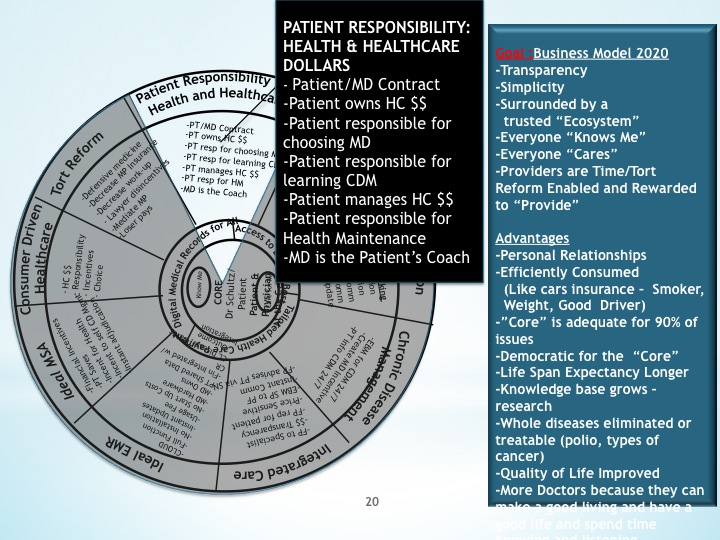
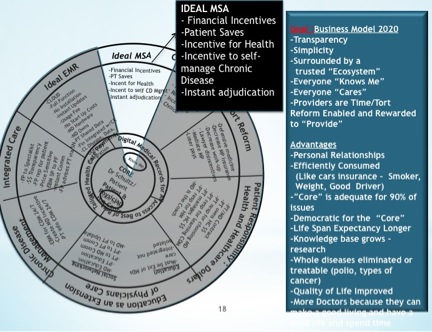
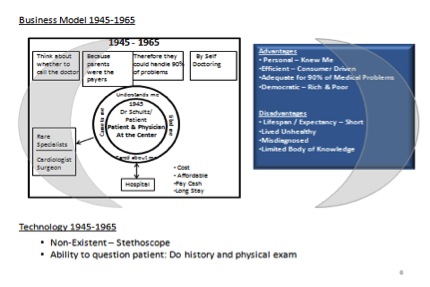
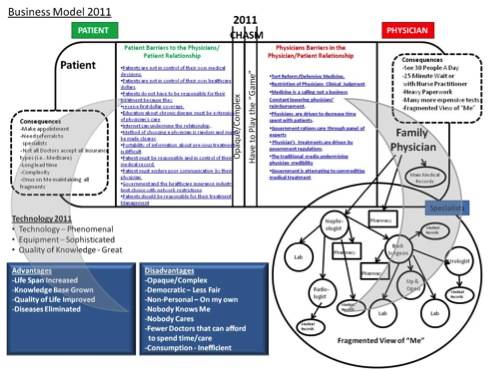
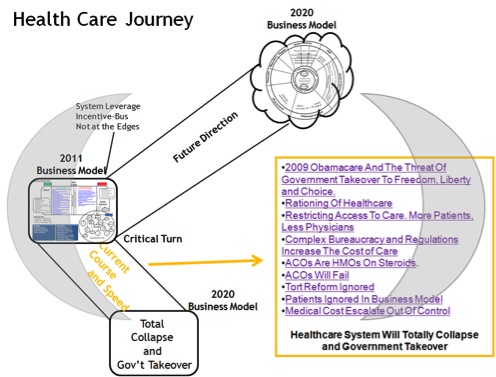

What i do not understood is in truth how you are no longer actually a lot more neatly-preferred than you may be now. You’re so intelligent. You recognize thus significantly in relation to this subject, made me for my part believe it from a lot of various angles. Its like men and women are not fascinated unless it is one thing to do with Girl gaga! Your own stuffs nice. Always take care of it up!